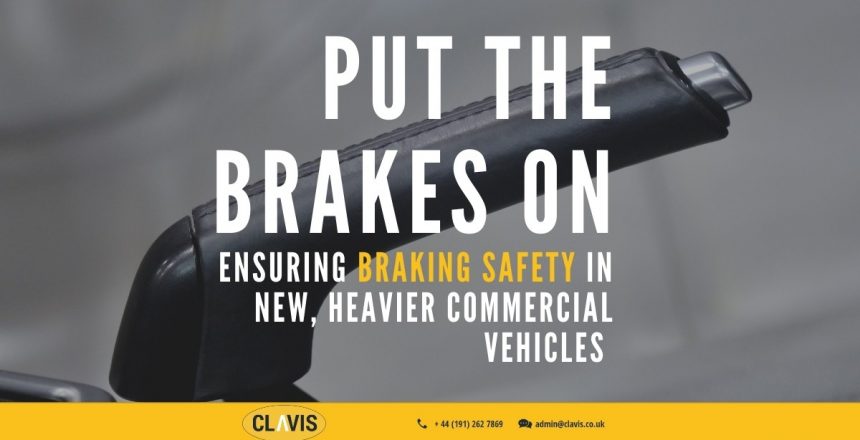Manufacturers must ensure brakes are safe in new, heavier commercial vehicles
Vehicle manufacturers, is your park brake setting up to standard? With the emergence of Ford’s new five tonne (5T) Transit van, automotive manufacturers must ensure park brakes can deal with heavier loads. Here, I explain the critical role of brake settings in these larger transit vehicles — and why measuring tools are vital to guaranteeing the safety of a vehicle.
The function of a vehicle’s braking system is simple. It’s designed to decelerate or decrease the speed of a vehicle. However, automotive manufacturers must ensure the park brake is secure and accurately set — especially in the case of heavier transit vans.
The usual commercial van can hold up to three tonnes of weight in the back. Naturally, the weight of a vehicle effects how much holding force is required. In fact, components within the park brake system ensure the driver is applying the right amount of force to the rear brakes. Without the right amount of force, the weight could overload the park brakes and, in a bad scenario, cause the vehicle to roll away.
Now, we have the challenge of newer, 5T Transit vans hitting our roads. Automotive manufacturers must ensure their park brakeare ready and secure for these heavier vehicles. But how?
Handbrake boost
Let’s start with the safety of manual park brake.
In the past, engineers would manually feel whether the handbrake had been set properly. To do this, they would wind a cable, attached to the park brake, up and down to vary the tension. While this practice works well for testing one vehicle, it is not efficient if the line is producing thousands of vehicles per day! That is why an automated solution is preferred.
Here at Clavis, we are experts in manual park brake systems and helping manufacturers ensure every vehicle produced meets the safety criteria required, even with the increased weight of Ford’s 5T Transit van. The only way of ensuring every manual park brake vehicle has the correct park brake setting is by measuring the levers on the brakes. By accurately setting the brake lever position, manufacturers can ensure the force required to secure the vehicle on a hill is consistent.
“We have adapted our measurement expertise from our typical brake lever measurement devices to other critical components, like this extra multiplier bracket.”
With the increased weight demands required, Ford added an element to the park brake system called the multiplier. This sits between the primary cable and the secondary cable, which also requires precision setting and adjustment before the rear brake setting. As a result, the force applied to the brake is magnified, enabling the driver to safely park a fully loaded 5T Transit on a hill.
For instance, if an operator lifts the handbrake to 100 newtons, the multiplier bracket will increase that force to over 200 newtons — depending on the ratios of the park brake lever mechanism. This ensures a vehicle up to five tonnes in weight can stop without overloading the brakes.
“With a multiplier bracket, the force applied to the brake is magnified. This is critical for parking with a fully weighted vehicle.”

All-in-one
For the braking system to work in unison, the rear brake setting must be properly set. If a vehicle in the factory passes the multiplier setting process test, but fails the rear brake test, then the vehicle cannot be deemed safe — and vice versa.
This means that engineers require data to perform their tasks. Accurate data from the multiplier and rear brake is vital for spotting any errors in the settings.
“Clavis also develops software. That’s why, when using our measurement tools, operators can view a live graph showing them how the measuring devices are working.”

After all, data and software technologies are revolutionising manufacturing — and we’re no strangers to this at Clavis.
At Clavis, we also specialise in developing software. That’s why, when using our measurement tools, operators can view a live graph showing them how the measuring devices are working. They receive data along with a live visualisation of the brake settings and its measurements. With this data, operators can know the whole braking system is set correctly, even as vehicles move down the production line.
With these measurement tools, automotive manufacturers can ensure the safety of the vehicle’s park brake system is in safe hands with CLAVIS — including in today’s heavier, 5T Transit vans.

